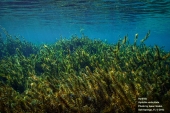
 2
2




 6
6




A human being should be able to change a diaper, plan an invasion, butcher a hog, conn a ship, design a building, write a sonnet, balance accounts, build a wall, set a bone, comfort the dying, take orders, give orders, cooperate, act alone, solve equations, analyze a new problem, pitch manure, program a computer, cook a tasty meal, fight efficiently, die gallantly. Specialization is for insects.
-Robert A. Heinlein
 5
5




I don't own the plants, they own me.
 2
2




John Daley Bendigo, Australia The Enemy of progress is the hope of a perfect plan
Benefits of rainfall collection https://permies.com/t/88043/benefits-rainfall-collection
GOOD DEBT/ BAD DEBT https://permies.com/t/179218/mortgages-good-debt-bad-debt
 3
3




Submerged Plants. also called Oxygenators, grow with their roots anchored in soil, but the leaves stay underwater. Oxygenators are essential for keeping the pond healthy and the water clear. The best known examples include Anacharis (a deep green plant with many delicate leaves, which will grow in water 15cm to 150cm deep) and Hornwort (dark green grass-like leaves, need 15cm to 30cm of water above the crown).
These plants absorb carbon dioxide and release oxygen into the water, and by oxygenating the water they help it support more aquatic life such as fish and beneficial aquatic insects. They also absorb excess nutrients in the water and help purify it, which reduces the growth of algae. Oxygenators also provide food and shelter for fish. The leaves, which are usually fern-like, lacy, or hairy, provide cover for the microscopic aquatic life forms which are an essential part of a balanced aquatic ecosystem. From here.
'What we do now echoes in eternity.' Marcus Aurelius
How Permies Works Dr. Redhawk's Epic Soil Series
 1
1




 9
9




"Si hortum in bibliotheca habes, nihil deerit." [If you have a garden and a library, you have everything you need] Marcus Tullius Cicero in Ad Familiares IX, 4, to Varro.
 5
5






 1
1




 2
2




 4
4




 4
4




 6
6




 4
4




Inmate, Natures Asylum, Siskiyou Ward
"Live Simply, So Others may SIMPLY LIVE"
 2
2




Spero Meliora
 3
3








Leora Laforge wrote:I was about to suggest adding duck weed to absorb all the extra nutrients, but I guess it's already there. cattails are also good at absorbing extra nutrients. Both these plants are edible for humans and livestock. If you have a strong butterfly net you can pull out some duckweed easily. It's a great protein source for chickens or pigs. Cattails are a good carbohydrate for pigs or chickens too.
Willows or other water loving trees would be good to go around the banks too, they can throw a little shade over the water and lower the temperature which would make it more comfortable for fish.
Spero Meliora
 1
1





|
It is difficult to free fools from the chains they revere - Voltaire. tiny ad:
The new kickstarter is now live!
https://www.kickstarter.com/projects/paulwheaton/garden-cards
|







